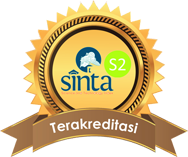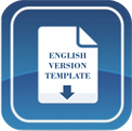Development of Interactive E-Module on Oxidation-Reduction Concept
DOI:
https://doi.org/10.15575/jtk.v6i2.10288Keywords:
flipbook, interactive e-module, redox reactionAbstract
This research aims to develop an interactive e-module on redox concept. Research and Development (R&D) method was used in this study with a Plomp model. This model included three phases: preliminary, prototype or development, and assessment. Validation sheets and response questionnaires were used as research instruments. Six expert lecturers, consisting of three media and materials experts each, assessed the validity sheets. A small-scale test was carried out utilizing two approaches; a one-to-one test and a small group test. A one-to-one test was given to three students who had high, medium, and low abilities; while the small group test was conducted on three teachers and 30 students from three different schools, which are MAN 2 Pekanbaru, MAN 1 Pekanbaru, and SMA IT Al-fitiyah. The results showed that the interactive e-module was very valid and could be used in learning activities. This is indicated by the percentage of validation from material experts 89.27% and media experts 88.76%. In a small-scale trial for a one-on-one test, the teacher's response 95.83% with very practical criteria; and student response test 87.73% with interesting criteria.
References
Akbar, S. & Sriwijaya, H. (2011). Pengembangan kurikulum dan pembelajaran ilmu pengetahuan sosial. Malang: Cipta Media.
Andrianie, D., Sudarmin, & Wardani, S. (2018). Representasi kimia untuk mereduksi miskonsepsi siswa pada materi redoks melalui penerapan model pembelajaran inkuiri terbimbing berbantuan LKS. Chemistry in Education, 7(2), 69-76. Retrieved from https://journal.unnes.ac.id/sju/index.php/chemined/article/view/17672
Ball, A., Joyce, H. D., & Butcher, D. A. (2016). Exploring 21st century skills and learning environments for middle school youth. International Journal of School Social Work, 1(1), 1-15. Retrieved from https://newprairiepress.org/ijssw/vol1/iss1/1/
Dewi, M. S. A., & Lestari, N. A. P. (2020). E-modul interaktif berbasis proyek terhadap hasil belajar siswa. Jurnal Imiah Pendidikan dan Pembelajaran, 4(3), 433-441. http://dx.doi.org/10.23887/jipp.v4i3.28035
Direktorat Pembinaan Sekolah Menengah Atas. (2017). Panduan praktis penyusunan e-modul. Jakarta: Kementerian Pendidikan dan Kebudayaan.
Fahmi, S., Priwantoro, S. W., Cahdriyana, R. A., Hendroanto, A., Rohmah, S. N., & Nisa, L. C. (2019). Interactive learning media using kvisoft flipbook maker for mathematics learning. In Journal of Physics: Conference Series, 1188(1), 1-6. https://doi.org/10.1088/1742-6596/1188/1/012075
Faizah, Miswadi, S. S., & Haryani, S. (2013). Pengembangan perangkat pembelajaran berbasis masalah untuk meningkatkan soft skill dan pemahaman konsep. Jurnal Pendidikan IPA Indonesia, 2(2), 120-128. https://doi.org/10.15294/jpii.v2i2.2712
Ganesan, N. (2009). Rapid development of multimedia instructional modules for information technology education. Journal of International Technology and Information Management, 18(1), 83-97. Retrieved from https://scholarworks.lib.csusb.edu/jitim/vol18/iss1/5/
Hasrul, B. (2010). Langkah-langkah pengembangan pembelajaran multimedia interaktif (the developing steps of interactive multimedia learning). MEDTEK Journal, 2(1), 1-7. Retrieved from http://ft-unm.net/%20medtek/JurnalMedtekVol.2No.1April_2010/hasrulbakri.pdf
Hidayatullah, M. S. (2016). Pengembangan media pembelajaran berbasis flip book maker pada mata pelajaran elektronika dasar di SMK Negeri 1 Sampang. Jurnal Pendidikan Teknik Elektro, 5(1), 83-88. Retrieved from https://ejournal.unesa.ac.id/index.php/jurnal-pendidikan-teknik-elektro/article/view/13674
Imansari, N. & Sunaryantiningsih, I. (2017). Pengaruh penggunaan e-modul interaktif terhadap hasil belajar mahasiswa pada materi kesehatan dan keselamatan kerja. Jurnal Ilmiah Pendidikan Teknik Elektro, 2(1), 11-16. http://dx.doi.org/10.30870/volt.v2i1.1478
Irwansyah, F. S., Lubab, I., Farida, I., & Ramdhani, M. A. (2017). Interactive electronic module in chemistry lessons. Journal of Physics: International Conference on Mathematics and Science Education (ICMScE), 895, 1-7. https://doi.org/10.1088/1742-6596/895/1/012009
Istuningsih, W., Baedhowi, B., & Sangka, K. B. (2018). The effectiveness of scientific approach using e-module based on learning cycle 7E to improve students’ learning outcome. International Journal of Educational Research Review. 3(3), 75-85. https://doi.org/10.24331/ijere.449313
Jaenudin, A., Baedhowi, & Murwaningsih T. (2017). The effectiveness of the e-module of economics learning on problem-based learning used to improve students' learning outcomes. International Conference on Teacher Training and Education, 158, 30-36. https://doi.org/10.2991/ictte-17.2017.32
Julia, I. & Utami L. (2020). Desain dan uji coba e-modul kimia berbasis problem solving pada materi larutan penyangga untuk kelas XI SMA semester II. Journal of Research and Education Chemistry, 2(1), 1-11. https://doi.org/10.25299/jrec.2020.vol2(1).4862
Larasati, M., Fibonacci, A., & Wibowo, T. (2018). Pengembangan modul berbasis problem based learning pada materi polimer kelas XII SMK Ma’arif NU 1 sumpiuh. Jurnal Tadris Kimiya, 3(1), 207-216. https://doi.org/10.15575/jtk.v3i1.2038
Linda, R., Sulistya, H. I., & Putra, T. P. (2018). Interactive e-module development through chemistry magazine on kvisoft flipbook maker application for chemistry learning in second semester at second grade senior high school, Journal of Science Learning, 2(1), 21-25. https://doi.org/10.17509/jsl.v2i1.12933
Mai, L. Y., & Utiya. (2018). Development of student worksheet science literacy in XI grade on chemical equilibrium topic. Unesa Journal of Chemistry Education, 7(3), 308-314. https://doi.org/10.26740/ujced.v7n3.p%25p
Muhson, A. (2010). Pengembangan media pembelajaran berbasis teknologi informasi. Jurnal Pendidikan Akuntansi Indonesia, 8(2), 1 – 10. https://doi.org/10.21831/jpai.v8i2.949
Munawarah, S., Seruni, R., Nurjayadi, M., & Kurniadewi, F. (2019). Pengembangan e-module biokimia pada materi metabolisme karbohidrat untuk mahasiswa program studi kimia. Jurnal Tadris Kimiya, 4(1), 69-77. https://doi.org/10.15575/jtk.v4i1.4679
Munir. (2008). Multimedia: konsep dan aplikasi pendidikan. Bandung: Alfabeta.
Novitasari, D. (2016). Pengaruh penggunaan multimedia interaktif terhadap kemampuan pemahaman konsep matematis siswa. Jurnal Pendidikan Matematika & Matematika, 2(2), 8-18. https://doi.org/10.24853/fbc.2.2.8-18
Nufus, H., Susilawati, & Linda R. (2020). Implementation of e-module stoiciometry based on kvisoft flipbook maker for increasing understanding study learning concepts of class X senior high school. Journal of Educational Sciences, 4(2), 261-272. http://dx.doi.org/10.31258/jes.4.2.p.261-272
Nusir, S., Alsmasi, I., Al-Kabi, M., & Sharadgah F. (2013). Studying the impact of using multimedia interactive programs on children's ability to learn basic math skills. Journal E-Learning and Digital Media, 10(3), 305-319. https://doi.org/10.2304/elea.2013.10.3.305
Oktari, B., Susilawati, & Copriady J. (2020). Implementation of oriented literated science e-module to improve critical skills thinking about in hydrocarbon material. Journal of Educational Sciences, 4(2), 347-356. https://doi.org/10.31258/jes.4.2.p.347-356
Parmin & Peniati, E. (2012). Pengembangan modul mata kuliah strategi belajar mengajar IPA berbasis hasil penelitian pembelajaran. Jurnal Pendidikan IPA Indonesia, 1(1), 8-15. https://doi.org/10.15294/jpii.v1i1.2006
Perdana, F. A., Sarwanto, Sukarmin, & Sujadi, I. (2017). Development of e-module combining science process skills and dynamics motion material to increasing critical thinking skills and improve student learning motivation senior high school. International Journal of Science and Applied Science: Conference Series, 1(1), 45-54. Retrieved from https://core.ac.uk/download/pdf/205456363.pdf
Plomp, T. (2013). Educational design research: an introduction. Educational design research, 11-50. Retrieved from https://ris.utwente.nl/ws/portalfiles/portal/14472302/Introduction_20to_20education_20design_20research.pdf
Pradilasari, L., Gani, A. & Khaldun, I. (2019). Pengembangan media pembelajaran berbasis audio visual pada materi koloid untuk meningkatkan motivasi dan hasil belajar siswa. Jurnal Pendidikan Sains Indonesia, 7(1), 9-15. https://doi.org/10.24815/jpsi.v7i1.13293
Redhana, I W. (2019). Mengembangkan keterampilan abad ke-21 dalam pembelajaran kimia. Jurnal Inovasi Pendidikan Kimia, 13(1), 2239-2253. https://doi.org/10.15294/jipk.v13i1.17824
Riduwan. (2012). Skala pengukuran variabel-variabel penelitian. Bandung: Alfabeta.
Septryanesti, N., & Lazulva. (2019). Desain dan uji coba e-modul pembelajaran kimia berbasis blog pada materi hidrokarbon. Jurnal Tadris Kimiya, 4(2), 202-215. https://doi.org/10.15575/jtk.v4i2.5659
Suarsana & Mahayuti, G. A. (2013). Pengembangan e-modul berorientasi pemecahan masalah untuk meningkatkan keterampilan berpikir kritis mahasiswa. Jurnal Pendidikan Indonesia, 2(2), 264-275. http://dx.doi.org/10.23887/jpi-undiksha.v2i2.2171
Sugiyono. (2017). Memahami penelitian kualitatif. Bandung: Alfabeta.
Sulalaha, W. A., Suryadharma, I. B., & Sukarianingsih, D. (2017). Analisis kesulitan peserta remidi dalam memahami konsep reaksi redoks. Jurnal Pembelajaran Kimia, 2 (1), 14-20. http://dx.doi.org/10.17977/um026v2i12017p014
Suryani, D. I., Suhery, T., & Ibrahim, A. R. (2014). Pengembangan modul kimia reaksi reduksi oksidasi kelas X SMA. Jurnal Pendidikan Kimia, 1(1), 18-28. https://doi.org/10.36706/jppk.v1i1.2380
Susanto, Dewi, N. R., & Irsadi, A. (2013). Pengembangan multimedia interaktif dengan education game pada pembelajaran IPA terpadu tema cahaya untuk siswa SMP/MTs. Science Education Journal, 230-238. https://doi.org/10.15294/USEJ.V2I1.1829
Syahroni, M. W., Dewi, N. R., & Kasmui. (2016). The effect of using digimon (science digital module) with scientific approach at the visualization of students’ independence and learning results. Journal Pendidikan IPA Indonesia, 5(1), 116-122. https://doi.org/10.15294/jpii.v5i1.5800
Syamsurizal, Haryanto, & Chairani, N. (2015). Pengembangan e-modul berbasis keterampilan proses sains pada materi kesetimbangan kimia untuk tingkat SMA, Prosiding SEMIRATA 2015 bidang MIPA BKS-PTN Barat, 655-661, Pontianak: Universitas Tanjungpura. Retrieved from https://jurnal.untan.ac.id/index.php/semirata2015/article/view/14286/12776
Wahyuni, S. I., Noer, A. M., & Linda, R. (2018). Development of electronic module using kvisoft flipbook maker application on the chemical equilibirium. Proceeding of the 2nd URICES, 178-189, Pekanbaru: Universitas Riau. Retrieved from https://ices.prosiding.unri.ac.id/index.php/ICES/article/view/6417
Wiana, W., Barliana, M. S., & Riyanto, A. A. (2018). The effectiveness of using interactive multimedia based on motion graphic in concept mastering enhancement and fashion designing skill in digital format. Ijet, 13(2), 4-20. https://doi.org/10.3991/ijet.v13i02.7830
Wijayanto, & Zuhri, M. S. (2014). Pengembangan e-modul berbasis flip book maker dengan model project based learning untuk mengembangkan kemampuan pemecahan masalah matematika. Prosiding Mathematics and Sciences Forum 2014, 625-628, Semarang: Seminar Universitas PGRI. Retrieved from http://prosiding.upgris.ac.id/index.php/masif2014/masif2014/paper/view/487
Downloads
Published
How to Cite
Issue
Section
Citation Check
License
Authors who publish with this journal agree to the following terms:
- Authors retain copyright and grant the journal right of first publication with the work simultaneously licensed under a Creative Commons Attribution-ShareAlike that allows others to share the work with an acknowledgement of the work's authorship and initial publication in this journal.
- Authors are able to enter into separate, additional contractual arrangements for the non-exclusive distribution of the journal's published version of the work (e.g., post it to an institutional repository or publish it in a book), with an acknowledgement of its initial publication in this journal.
- Authors are permitted and encouraged to post their work online (e.g., in institutional repositories or on their website) prior to and during the submission process, as it can lead to productive exchanges, as well as earlier and greater citation of published work (See The Effect of Open Access).








